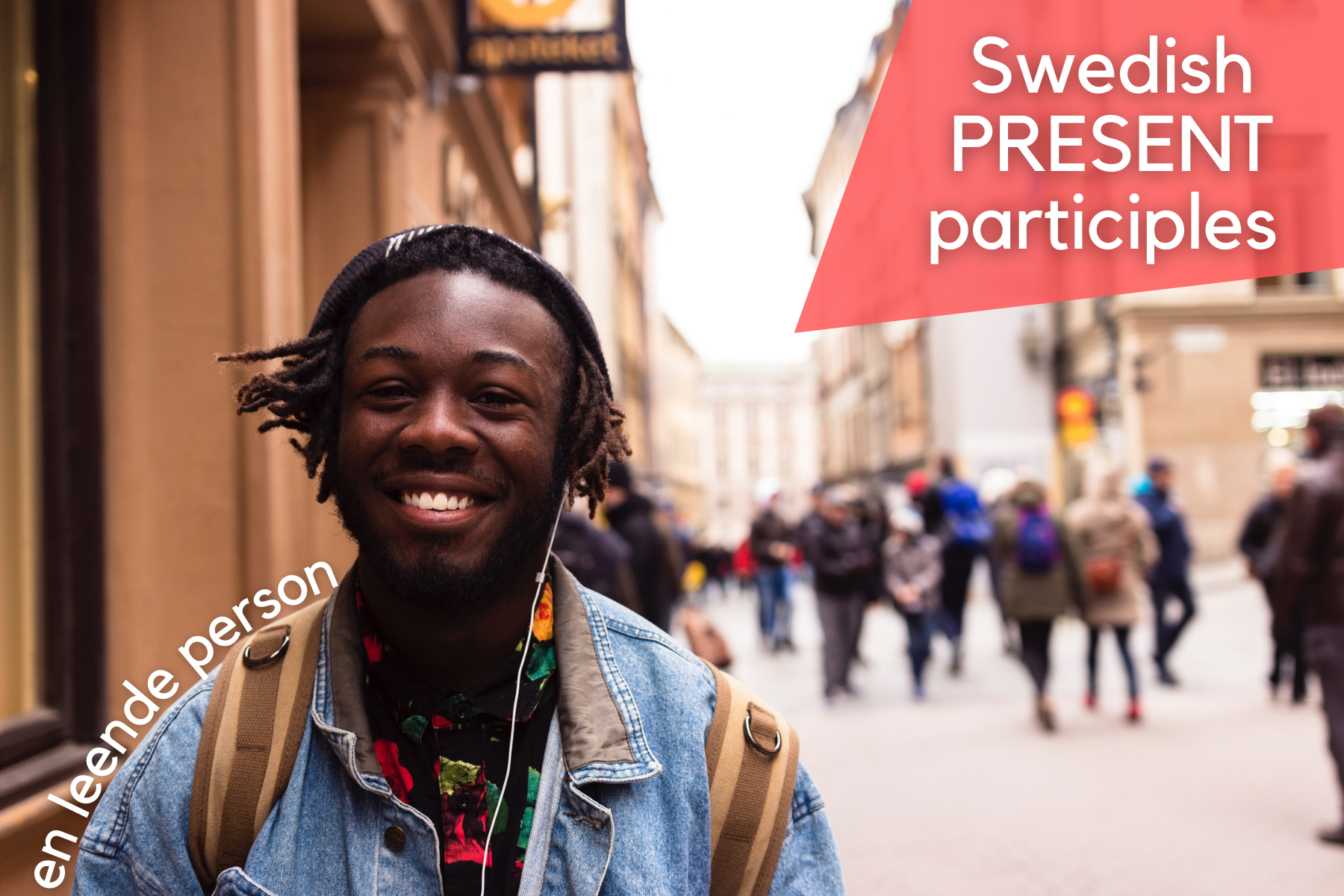How to use Swedish present participles Posted by Chelsea B on Jan 28, 2022 in Swedish Language, Vocabulary
Titta! En flygande ko! En skrattande cat! A flying cow, and a sitting cat? You can say whatever nonsensical thing you’d like -and much more, with the help of present participles. Present participles take the -ing form in English and serve an array of grammatical purposes. This week, we’ll learn how to construct the present participle in Swedish using the suffixes –ande and –ende, four common ways to integrate this concept into your speech, and practice with some spännande sentences!
How to construct the present participle in Swedish
The two endings for Swedish present participles are -ande, and –ende. To create a present participle, grab the infinitive version of the verb you’d like to modify and select the correct suffix.
So, for verbs that end in -a, add -ande
att springa → springande
Peter såg en springande häst i ängen.
Peter saw a running horse in the field.
att köra → körande
En körande person bör inte tala i telefon.
A driving person ought not to talk on the phone.
For verbs that end in any other vowel, add -ende
att bo → boende
Han är boende i Spanien nuförtiden.
He is living in Spain nowadays.
att kvarstå → kvarstående
att underhålla → underhållande
De åtta kvarstående deltagarna i Allt för Sverige är underhållande.
The 8 remaining participants in Allt för Sverige are entertaining.
Now for some exceptions… you were counting on it, right? For many irregular verbs, the word gains another syllable when put into this form. For example:
bli → blivande
ha → havande
ta → tagande
Need to brush up on your verbs before mastering this concept, check out “One of the most important Swedish verbs: vara “to be.”
Uses of present participles in Swedish
There are 4 main uses of this part of speech.
1. First, as an adjective to modify a person, place, or thing:
Klara har ett lysande leende. Klara has a beeming smile.
2. As an adverb, often paired with a motion verb:
Tobbe kom hoppande från kajen med en fisk i hand.
Tobbe came skipping from the dock with a fish in hand.
3. As a noun to describe a person or a thing with a specific function:
en ordförande → chairperson / president
ett meddelande → a message
(en) tjatande → chatter
4. In combination with a preposition!
Jag ringer angående din annons på Blocket.
I’m calling in regards to your ad on Blocket (Swedish Craigslist/Gumtree).
Practice using Swedish present particles
Let’s practice with a fill-in-the-blank exercise:
- __________ sidor i kapitel 4 får ni läsa hemma till i morgon. (återstå)
- Det vore bra om du kunde ge en ____________ hand på lördag. (hjälpa)
- Jag undrar vad som hände i lobbyn. En _________ man var där när jag gick förbi. (rasa)
- Hej, jag ringer _______ en annons om en Jeep. (angå)
- Det brukar vara mycket ___________ kring valborg. (festa)
- Jag tycker det är ______ att coronaviruset sprider sig så fort. (oroa)
- Vad är det där ljudet? Det är så _________! (störa)
- Alla barnen ser väl-_________ ut efter sportlovet. (må)
- Saras gamla klasskamrat ligger ________ i cancer. (dö)
- Snälla, stör inte oss. Lektionen är ___________. (pågå)
Scroll down for the answers!
.
.
.
.
.
.
.
.
It’s semla season! And if you get any of the answers right, you should treat yourself to one. Now for the answers below!
.
.
.
.
.
1. återstående
2. hjälpande
3. rasande
4. angående
5. festande
6. oroande
7. störande
8. mående
9. döende
10. pågående
How did you do on the fill-in-the-blank exercise? Anyone get 10/10? Brag in the comments below, and add your own example sentence!

Build vocabulary, practice pronunciation, and more with Transparent Language Online. Available anytime, anywhere, on any device.






Comments:
evan:
thanks for this guide! I got 10/10 of the questions 🙂